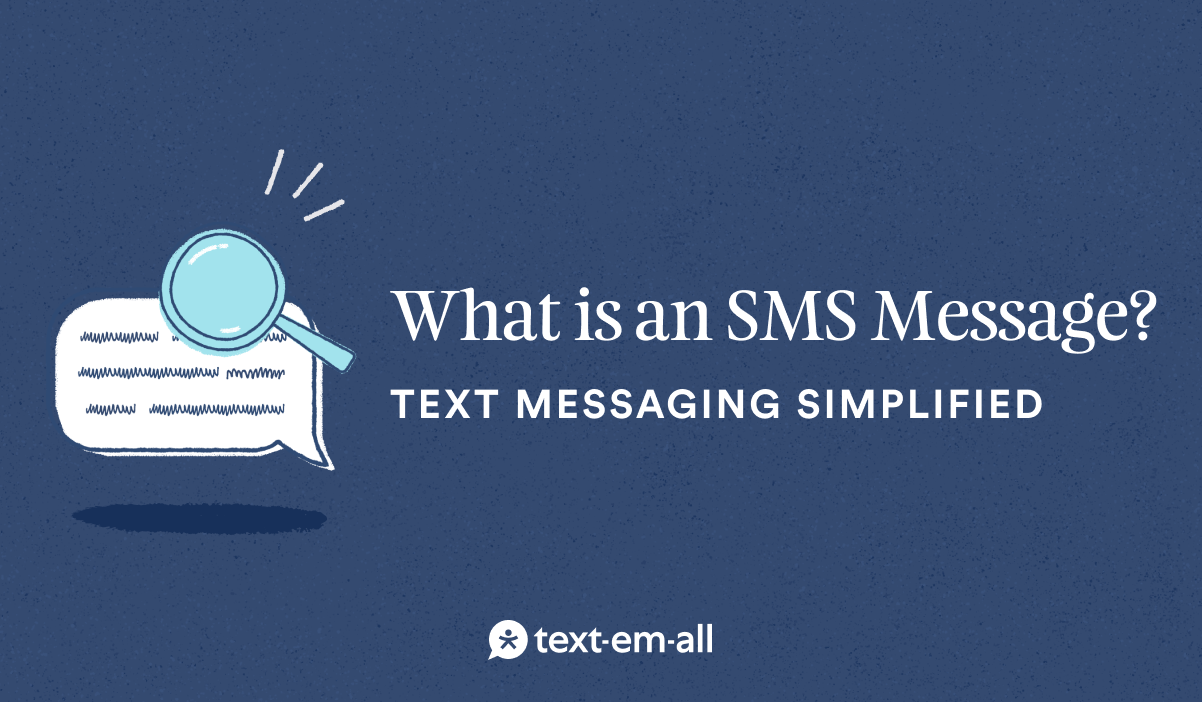
The ways people prefer to communicate are constantly changing, but one messaging method has remained consistent in capturing people's attention—SMS. Short Message Service (SMS), commonly known as text messaging, has changed how we communicate. In this guide, we will explore the basics of SMS, how it works, its benefits, potential applications with APIs, its evolution over time, and its promising future.
Breaking Down SMS: Origin, Mechanism, and Terminology
SMS traces its roots back to the late 1980s, when it was first created for mobile network operators to communicate with devices on their networks. Since then, it has revolutionized the way we communicate with each other, allowing people to speak daily in a simple, fast way.
What is SMS?
SMS, commonly known as a "text message," is a text-based communication service that allows for exchanging brief messages between mobile devices. It is a standardized protocol that enables the transmission of up to 160 characters (in most cases) over cellular networks.
"SMS" and "text message" are often used interchangeably, but SMS refers explicitly to the technology underlying text messaging.
The Technical Workings of SMS
Behind the scenes, text messages go through a long, technical journey from the message creator to the recipient. When you send a text message from an application like Text-Em-All, it starts with you, travels from Text-Em-All to the aggregators, to the mobile carriers, and then finally reaches your recipient.
However, many texters don’t even know all this “behind-the-scenes” work occurs because these operations happen instantaneously. Texts are usually delivered almost immediately.
SMS vs. MMS
While SMS is limited to text-only messages, Multimedia Messaging Service (MMS) supports multimedia content such as images, videos, and audio files alongside text. MMS messages are typically larger in size and require a data connection for transmission. If you’re using a mass messaging platform, they often cost extra due to these factors.
The Advantages of SMS in Modern Communication
Text messaging has several advantages over traditional forms of communication, such as phone calls and emails.
1. Most People Prefer Texts Over Calls
Texts are non-intrusive, allowing recipients to respond at their convenience, and they provide a more concise and efficient way to exchange information than traditional voice calls.
2. Text Messages Have a High Open Rate
Additionally, businesses have recognized the power of the text message for reaching their target audiences. Text messages are immediate and boast a high open rate, so many companies employ mass texting strategies to share updates, promotions, and time-sensitive information with customers and employees alike.
3. SMS Offers Better Engagement
Texting also facilitates two-way communication, enabling businesses to gather feedback, conduct surveys, and engage in real-time conversations with their audience. This interactive nature fosters stronger relationships and a better understanding of customer preferences.
Read: Texting 101: The Full Guide to Mass Texting as a Business
Exploring the Potential of SMS API
SMS APIs (Application Programming Interfaces) help further automate many businesses' processes. These tools enable developers to integrate text message functionality into their applications and websites. With SMS APIs, companies can automate communication processes, send personalized messages, and enhance customer engagement.
Text-Em-All allows developers and anyone with an approved application interested in using our infrastructure to integrate into their applications. API access will allow you to send a call or text automatically without having to go through the steps of creating a broadcast, and we offer several features you can access once you integrate with us.
SMS Technologies: From Past to Present
The humble text has a rich history, evolving from its early days as a simple text messaging service to a versatile communication tool used worldwide.
As we mentioned earlier, the concept of texting emerged in the 1980s as a way for cellular networks to send short messages using GSM standards to mobile devices. The first text message was sent in the United Kingdom in 1992, marking the beginning of a new era in mobile communication.
While consumers initially viewed texting as a supplementary service, this communication method quickly gained popularity among consumers as a convenient communication method. In 2007, the number of text messages sent in a month officially surpassed the number of monthly phone calls placed by Americans.
Today, messaging applications like WhatsApp, iMessage, and Facebook Messenger compete with typical text messaging by offering richer multimedia experiences. However, SMS has retained its relevance since it’s universally compatible across devices and networks, making it a reliable option.
The Future of SMS
As technology continues to evolve, the future of Short Message Service looks promising, and it will likely remain central to text-based communication. Its simplicity and reliability make it an attractive option for urgent messaging, emergency alerts, and time-sensitive notifications.
Emerging technologies hold the potential to enhance texting services even further. These advancements will enable businesses to deliver customers more interactive and personalized messaging experiences. Some exciting developments include:
- RCS (Rich Communication Services): An evolution of SMS that supports advanced features, such as:
- Read receipts
- Typing indicators
- Message delivery
- Branded visuals, logos, and interactive elements
- Suggested replies, action buttons, carousels
- Multimedia sharing (audio, video, more emojis, larger, higher quality images)
- Better group chat capabilities
- Increased security
- AI/Machine Learning: Leveraging artificial intelligence and machine learning to offer personalized and contextual messaging experiences.
- Voice Technology: Features such as text-to-speech make sending voice messages more accessible to users who cannot record their own voice.
By embracing these advancements, mass messaging platforms can provide their users with a comprehensive, cutting-edge messaging solution that meets the ever-evolving communication needs of businesses and individuals alike.
Leveraging SMS for Mass Messaging through Text-Em-All
Since text messaging is such an integral, powerful part of communication, businesses must learn how to use it to their advantage. One of the best ways to leverage text is through a mass texting service like Text-Em-All.
With Text-Em-All, you can simplify your communication strategy by creating one simple text that goes out to all your contacts—whether that’s 50 people or 5,000. To try our platform, simply create your free account and start exploring our product. Start texting today and keep people informed when it matters most!












